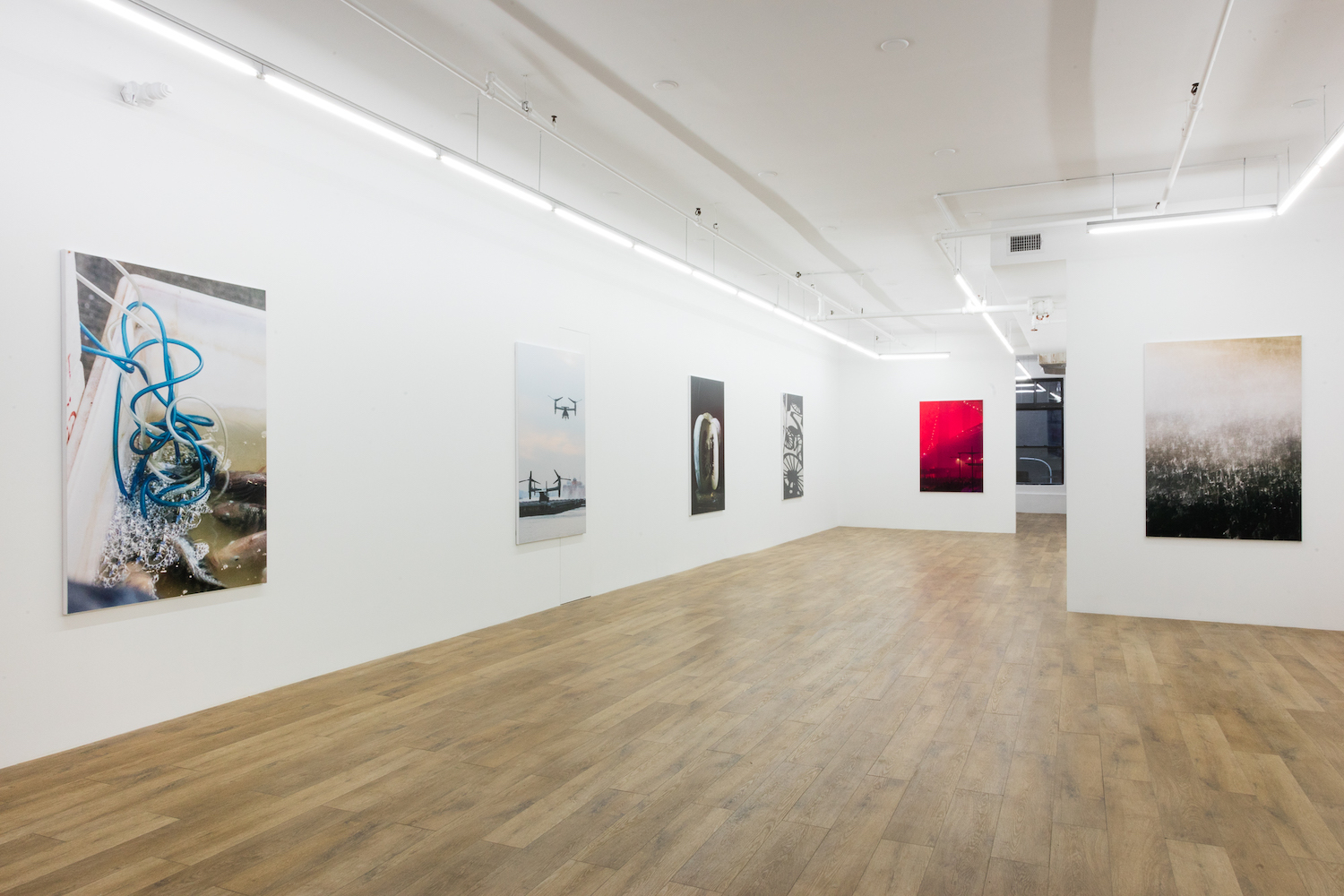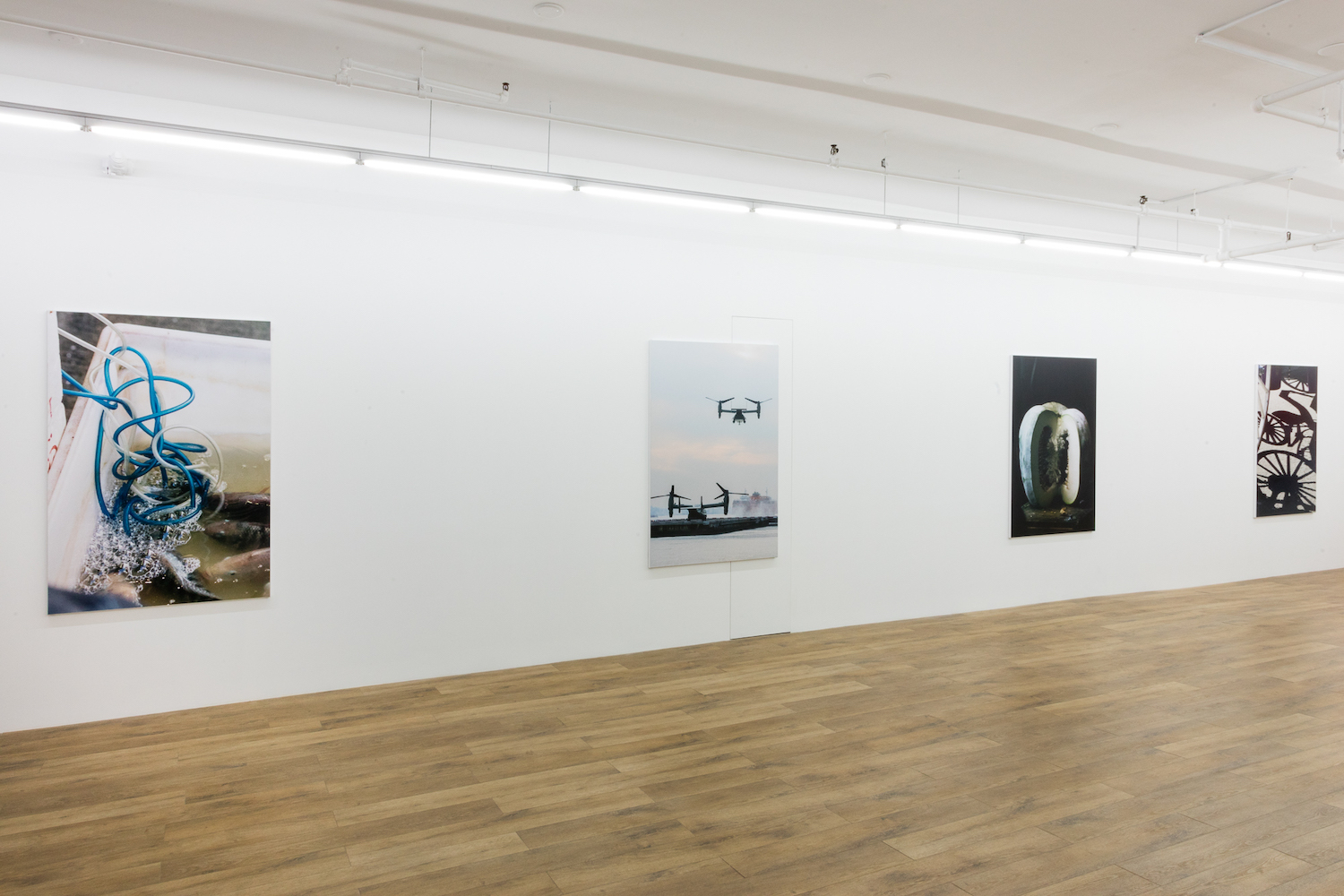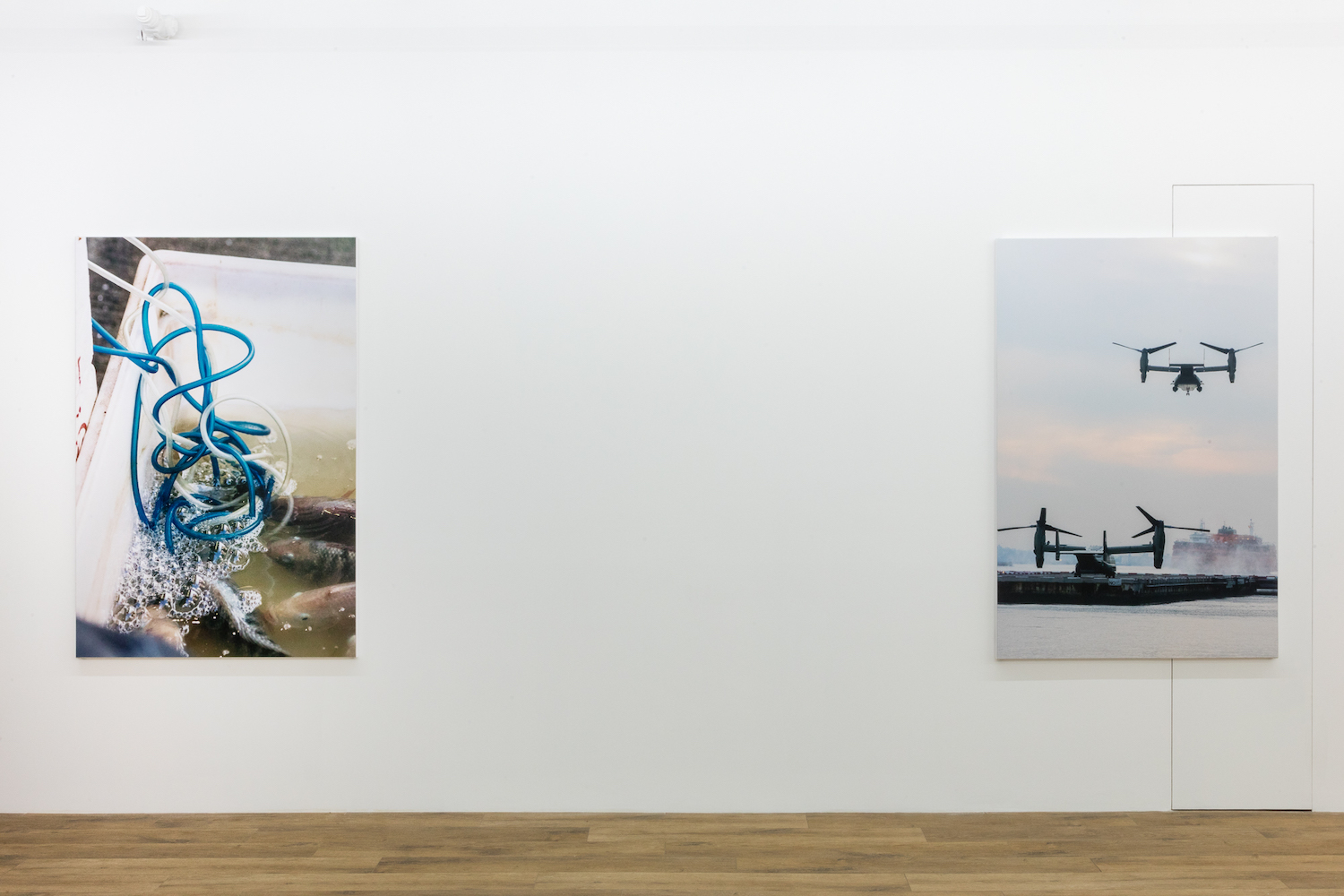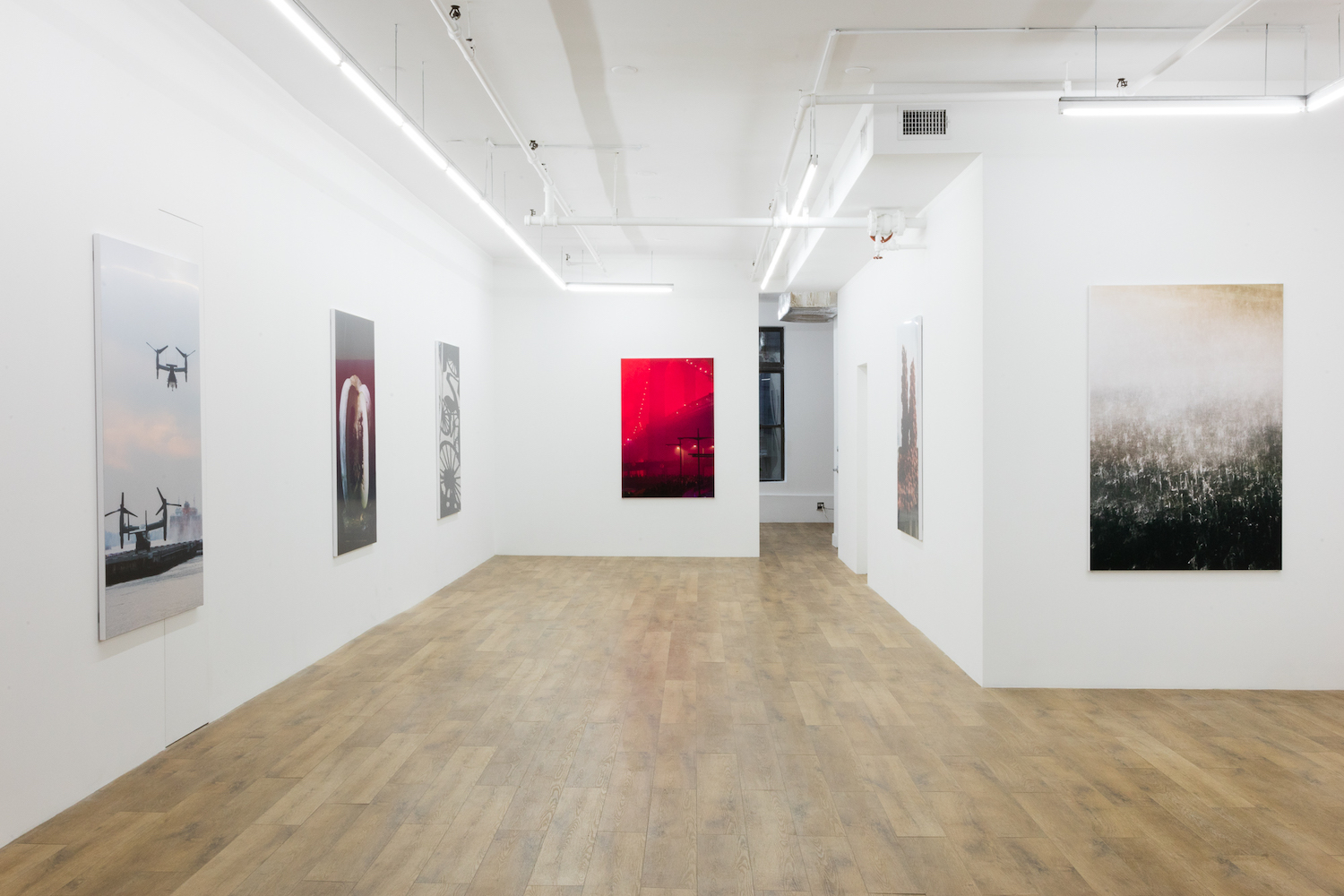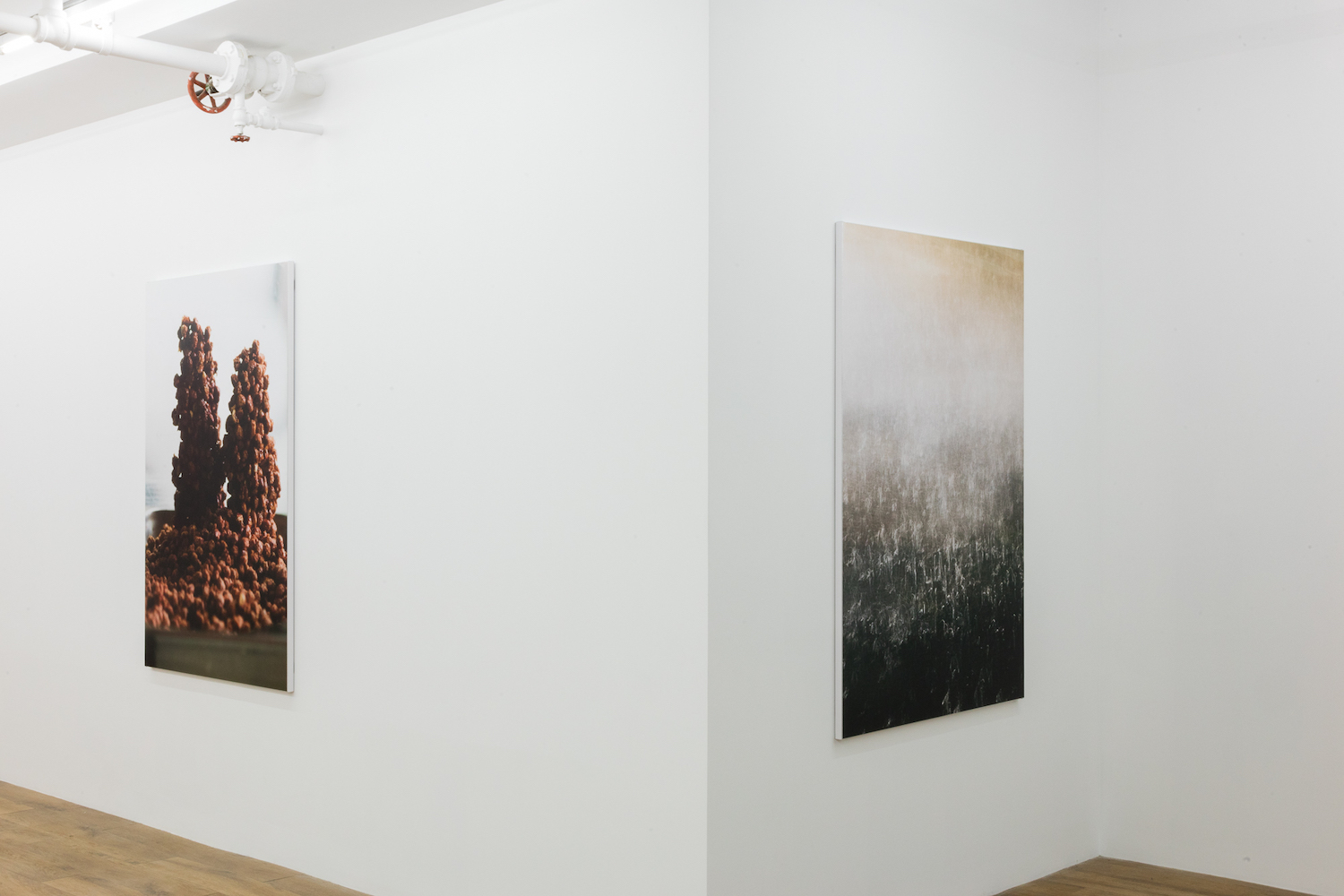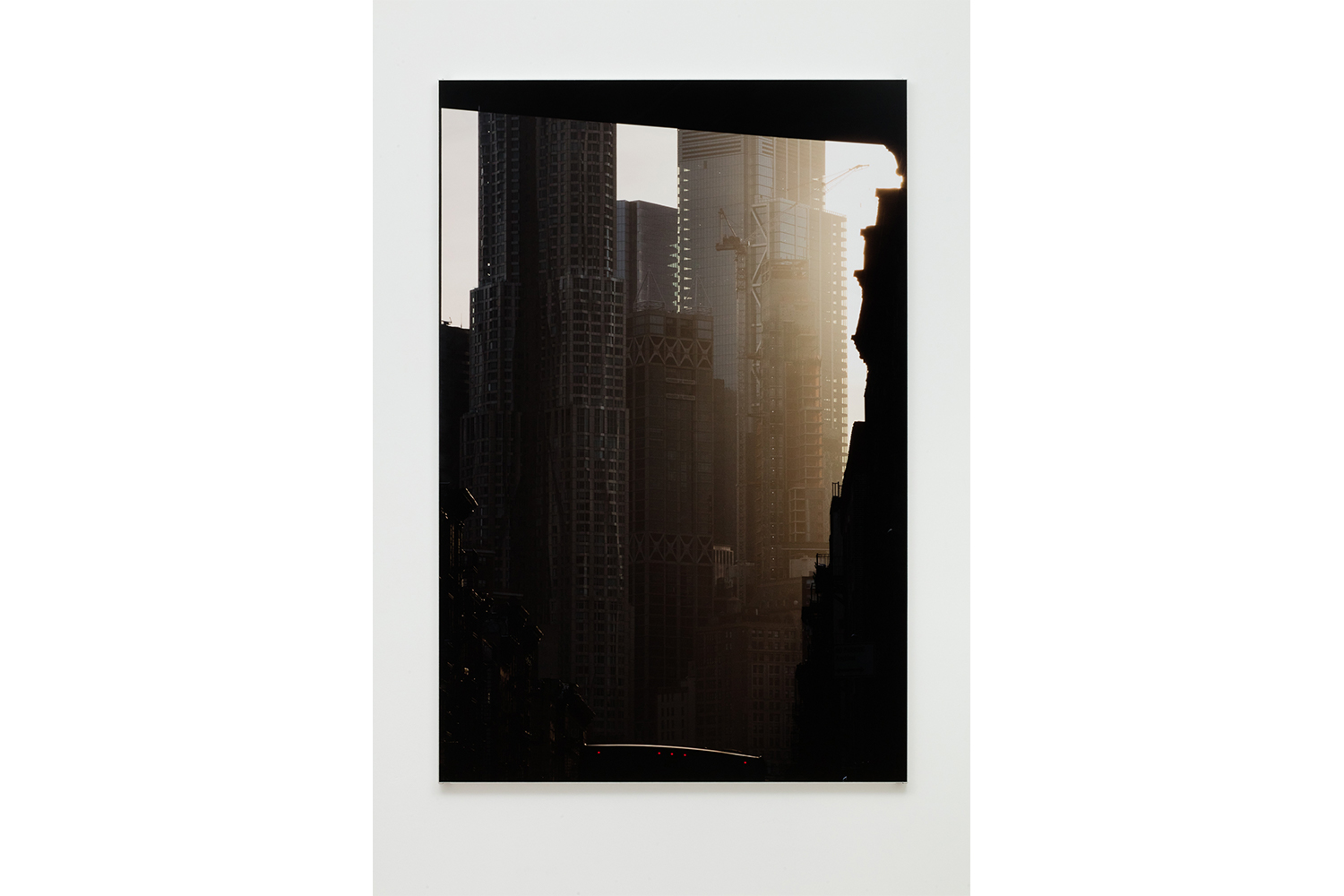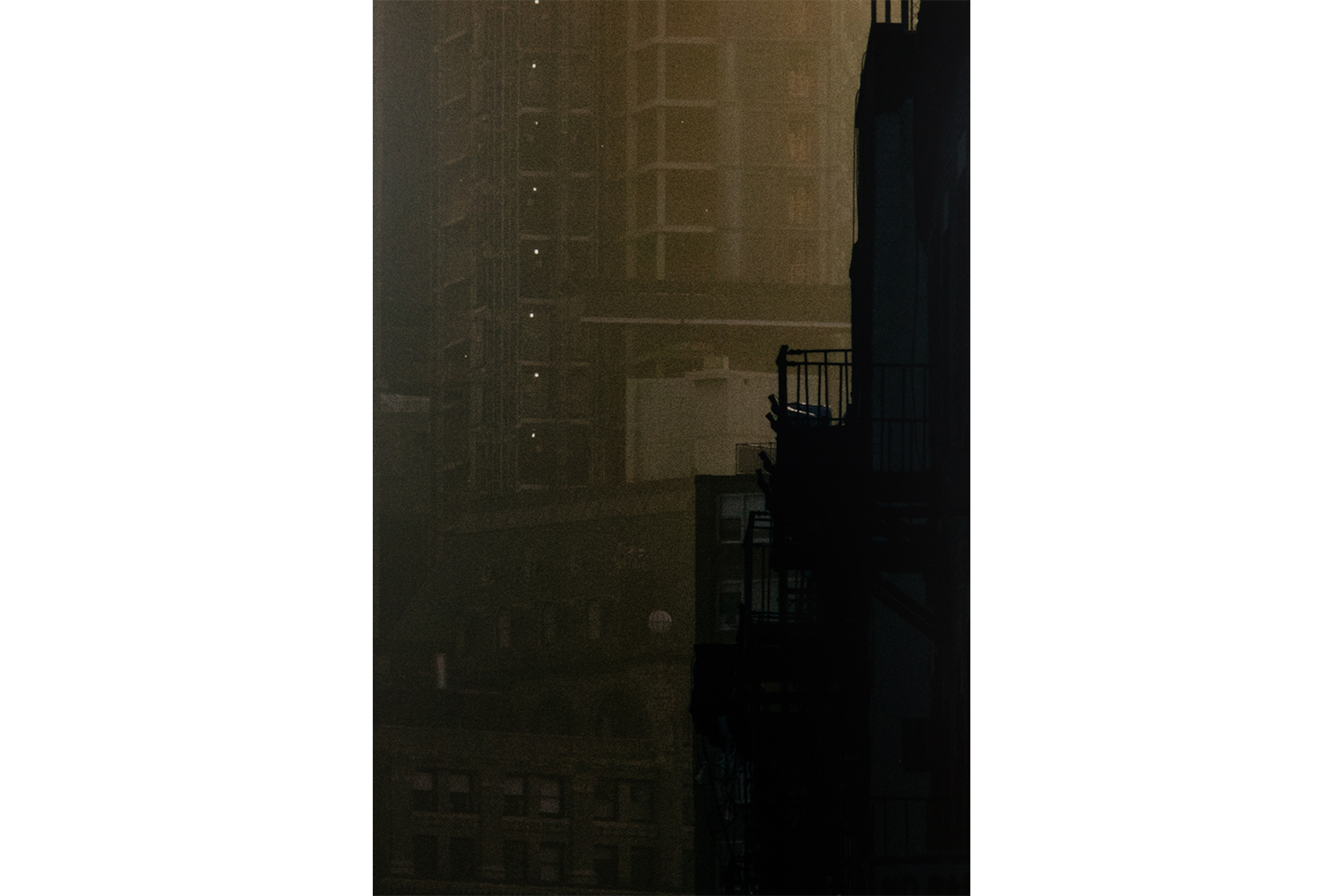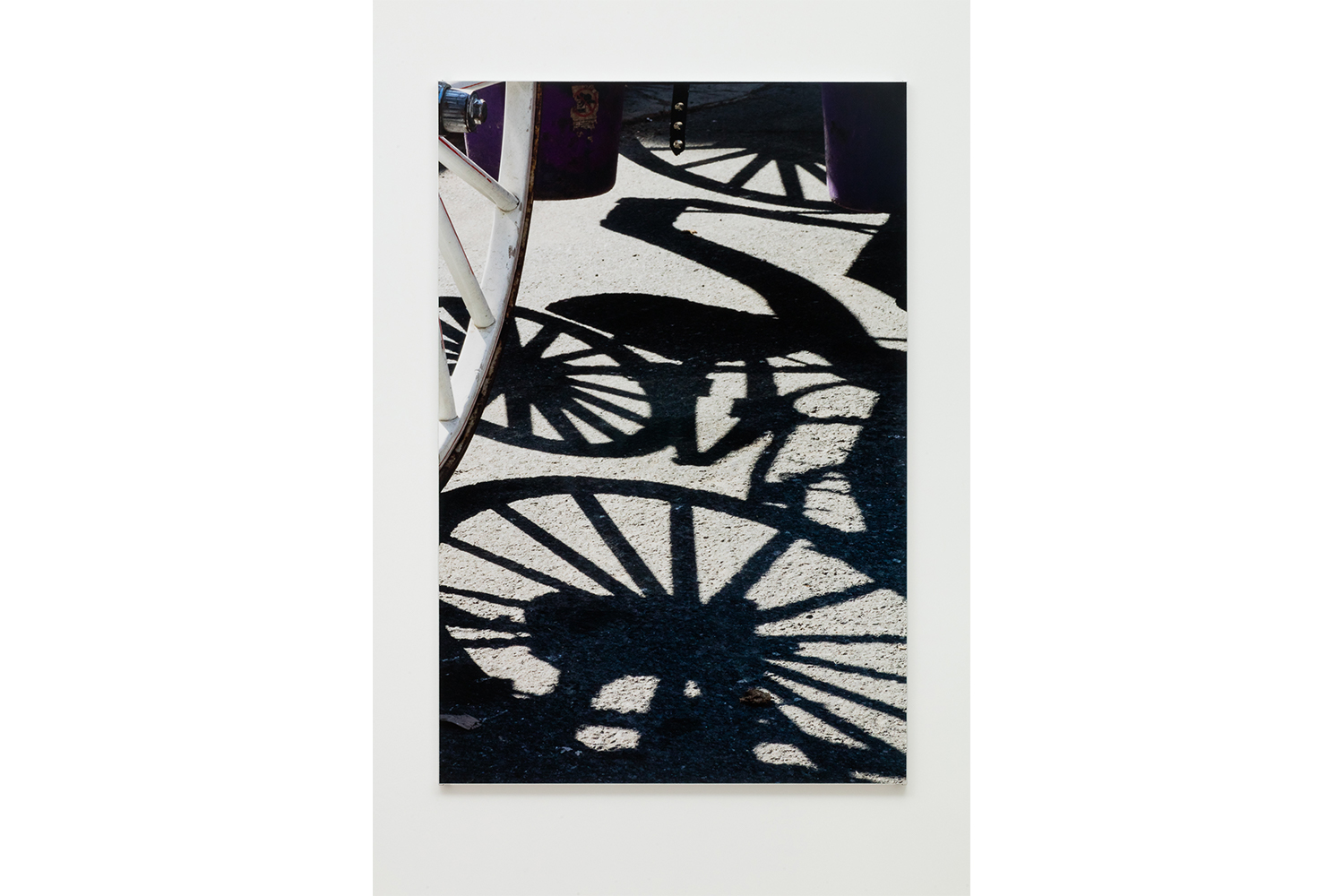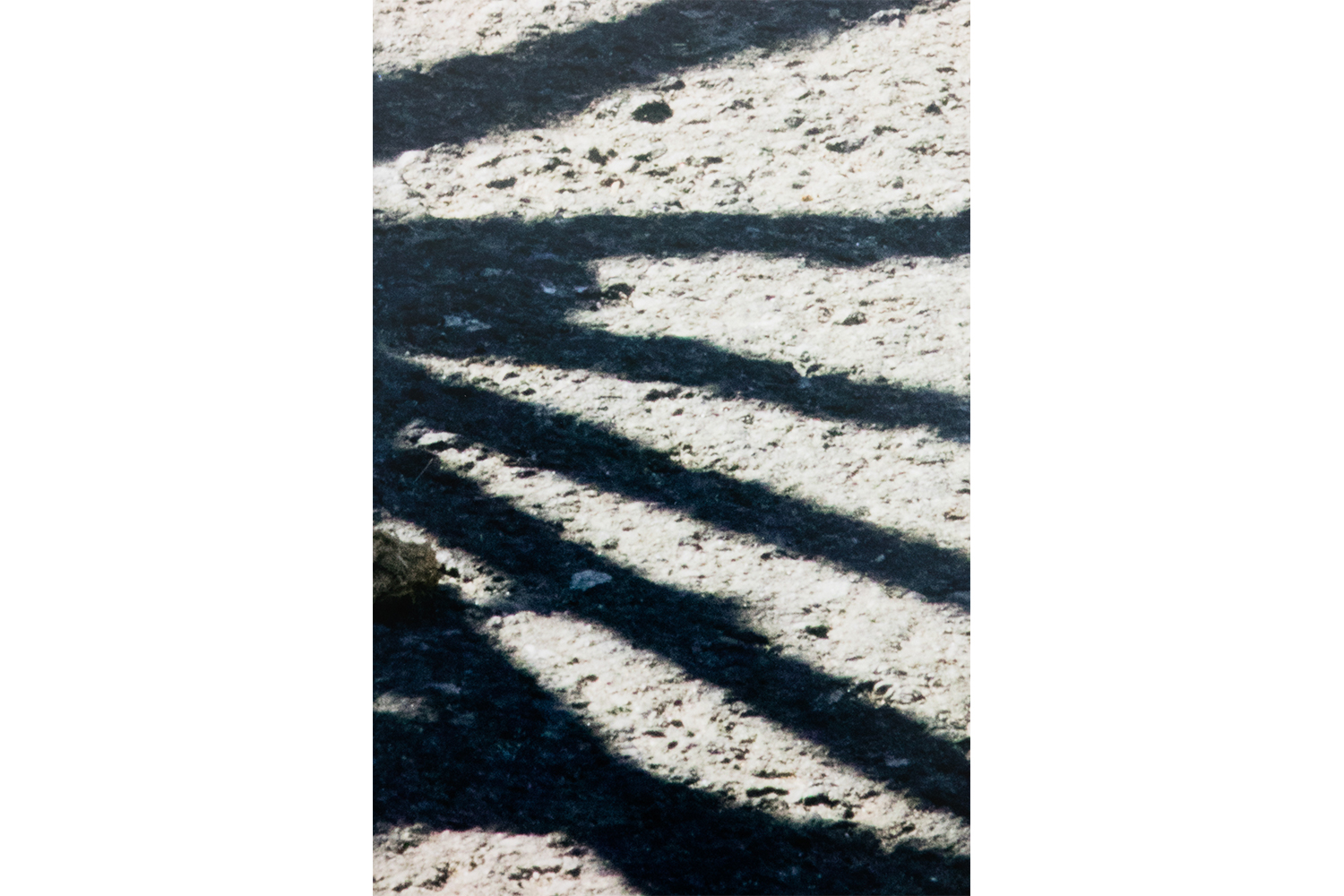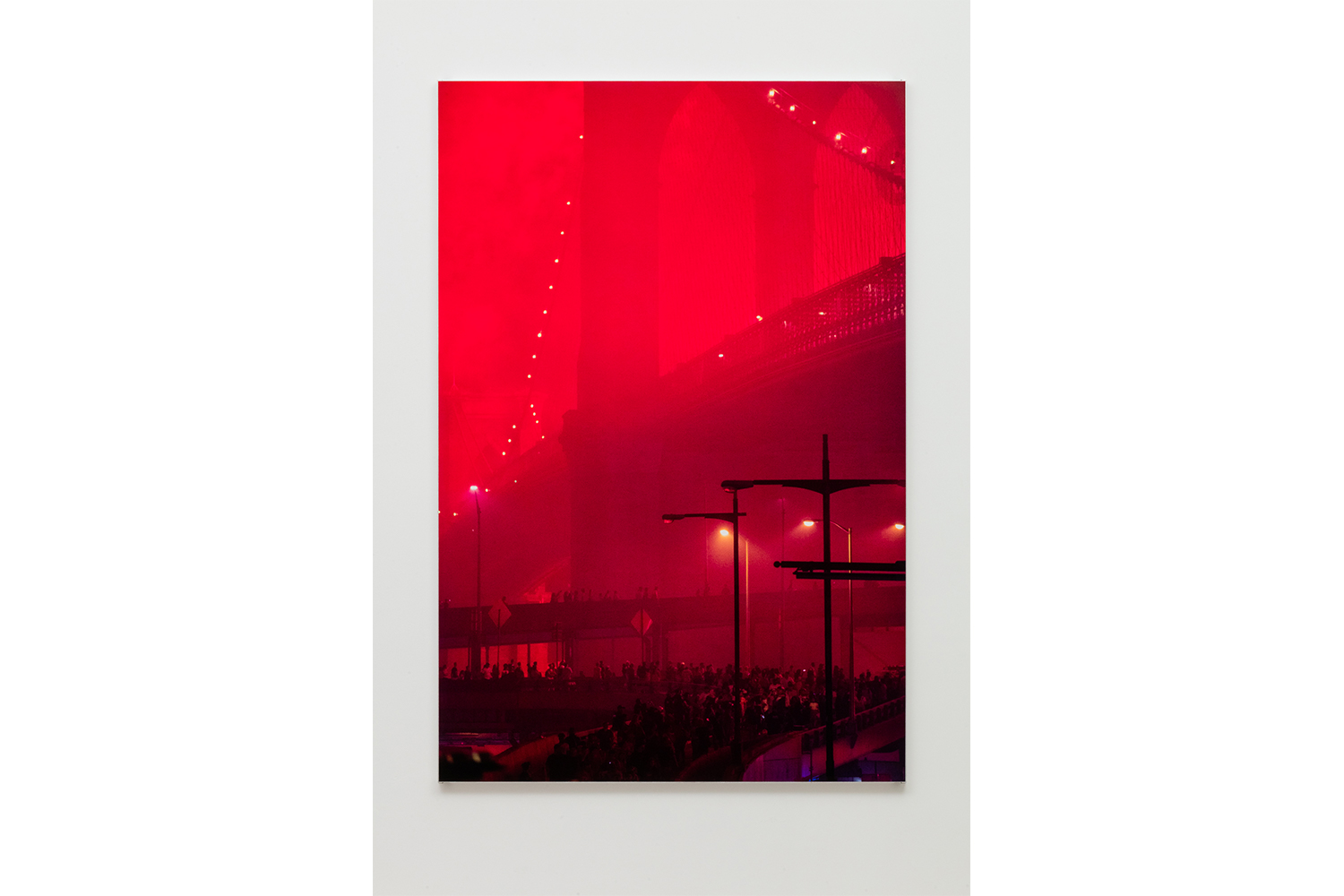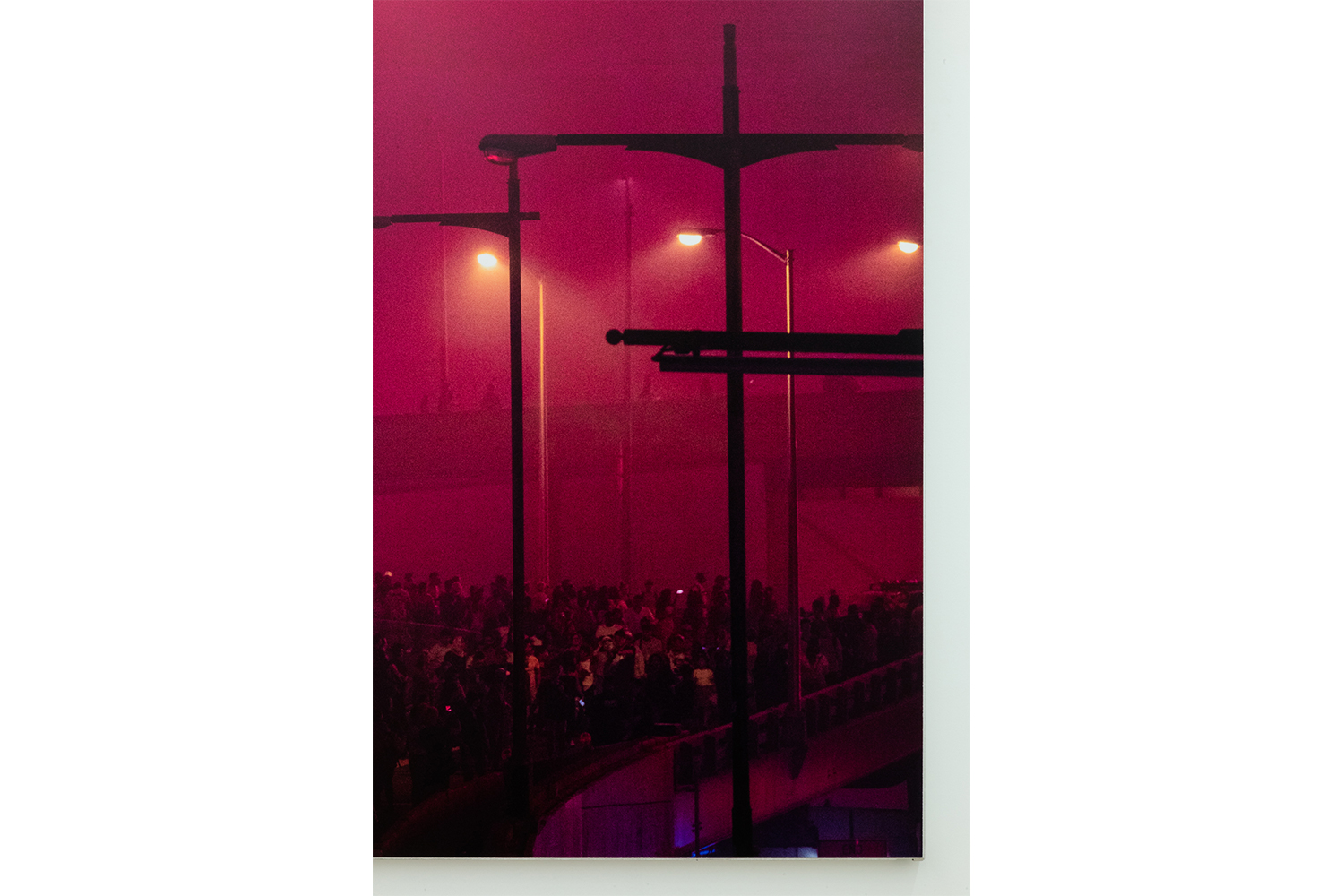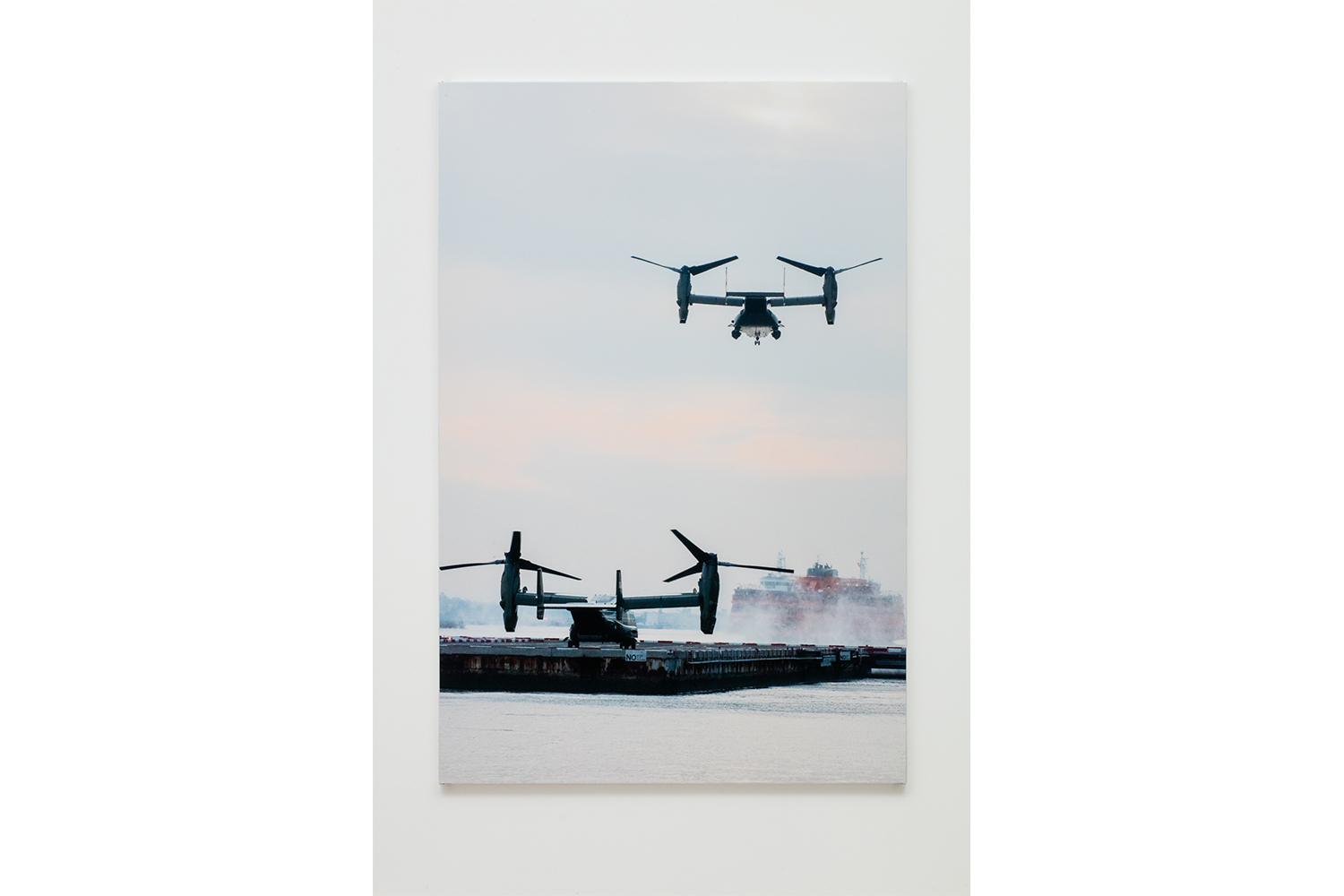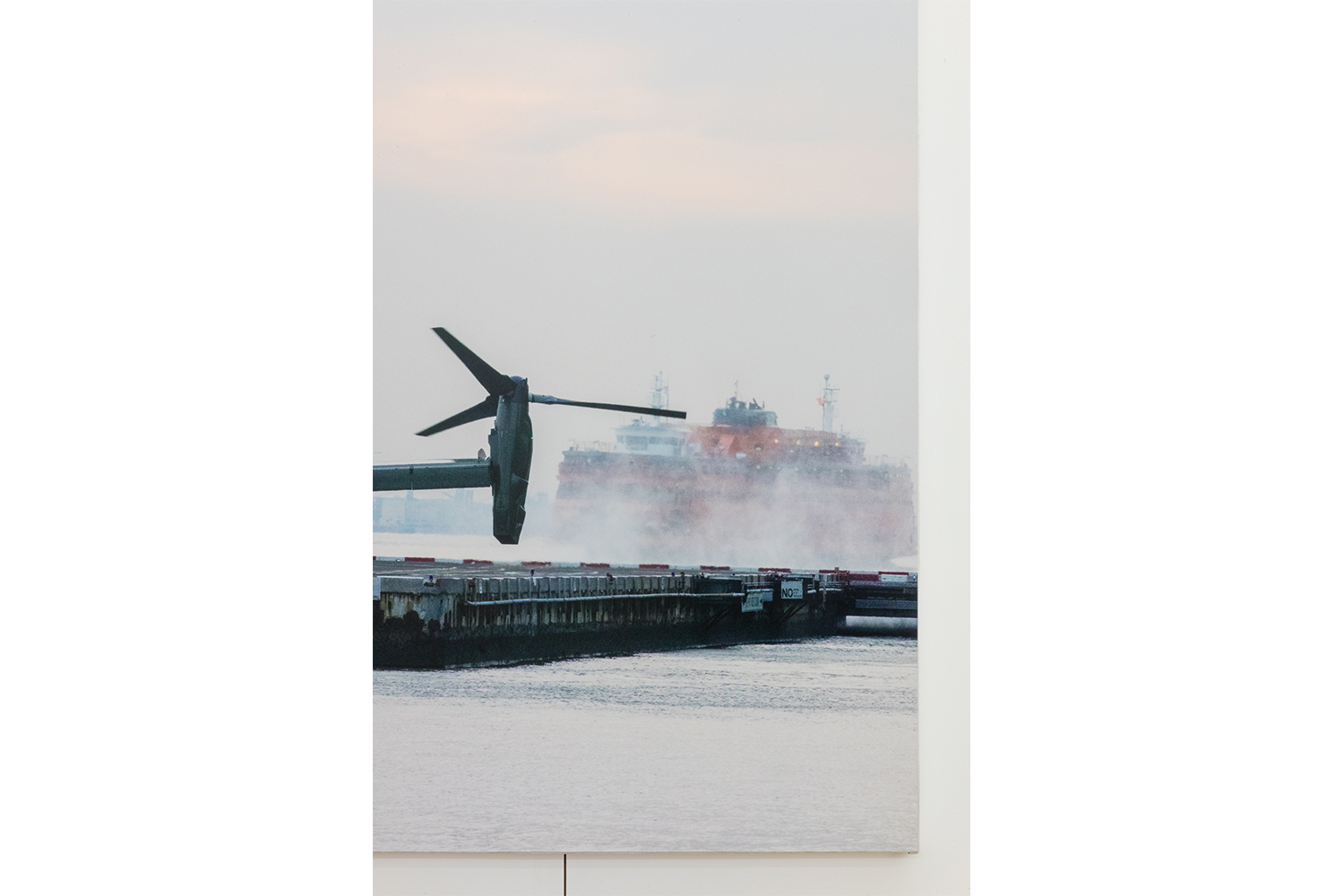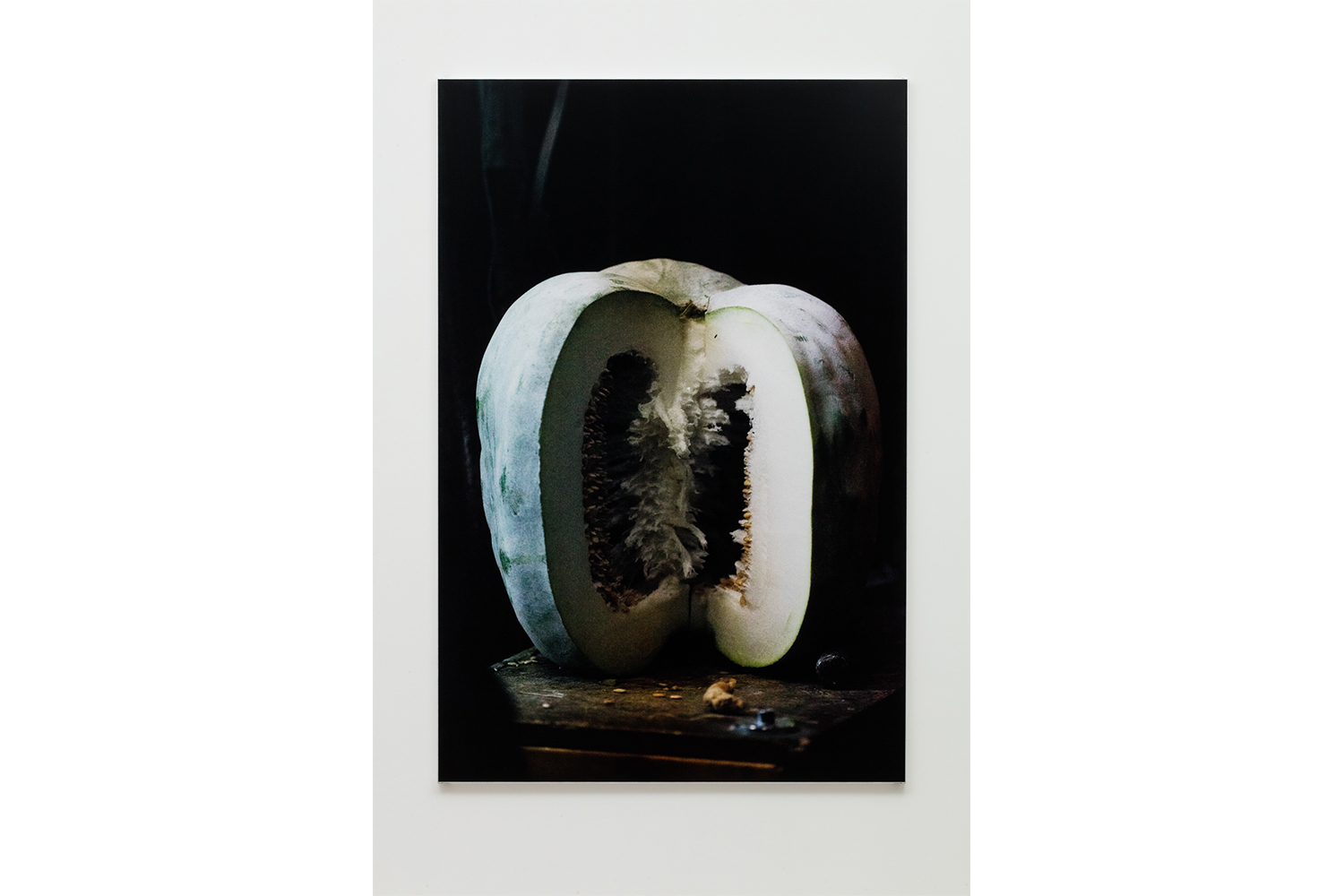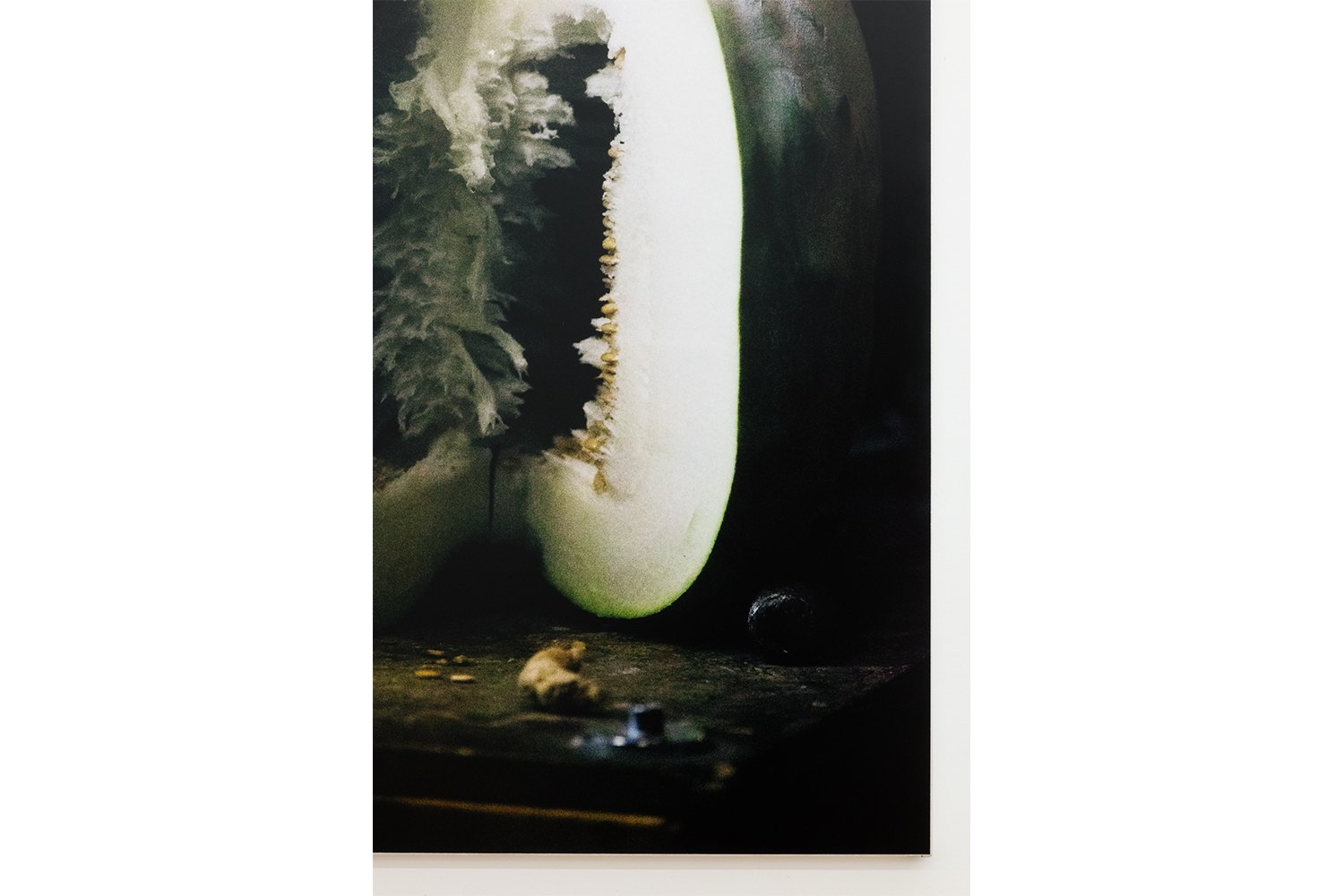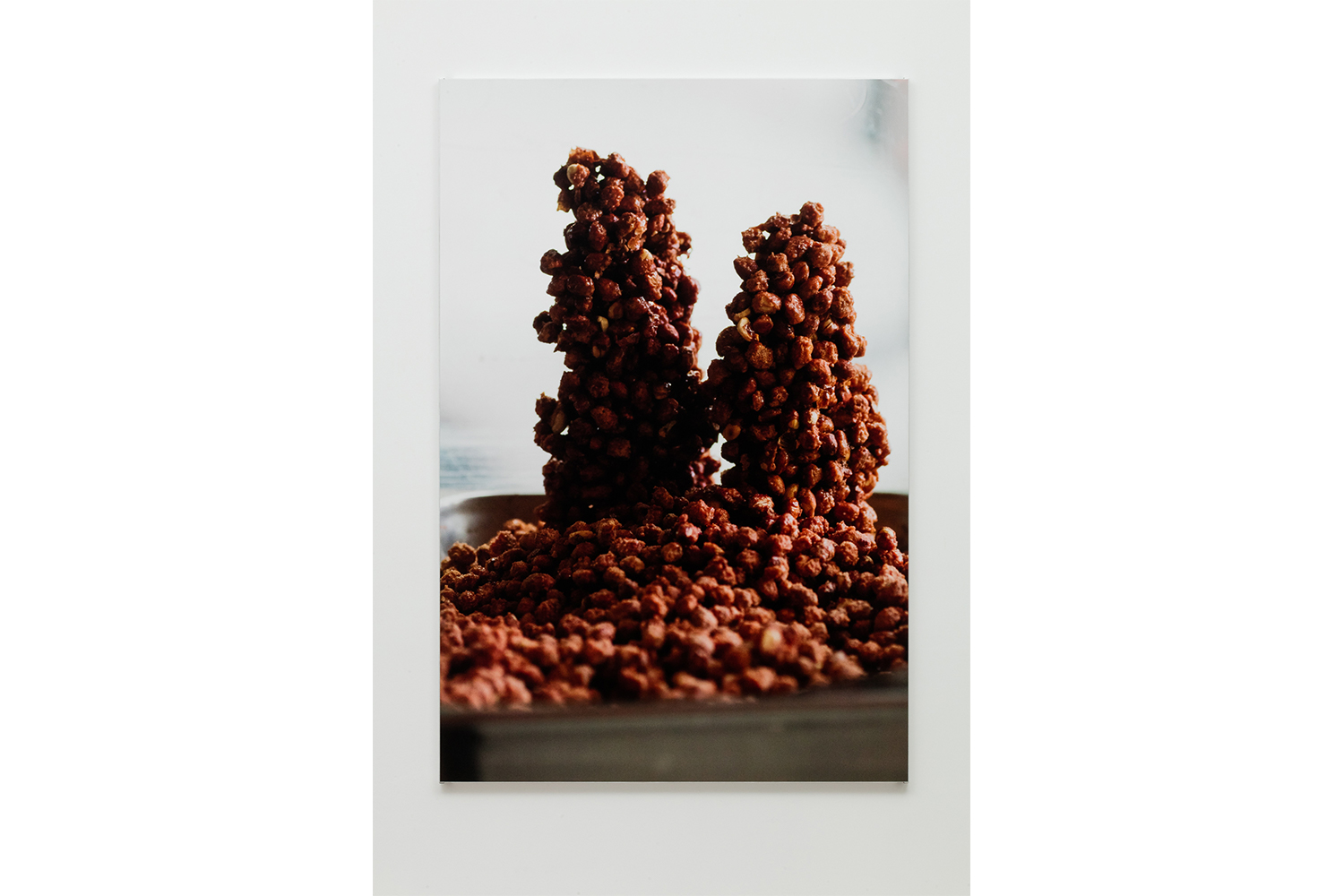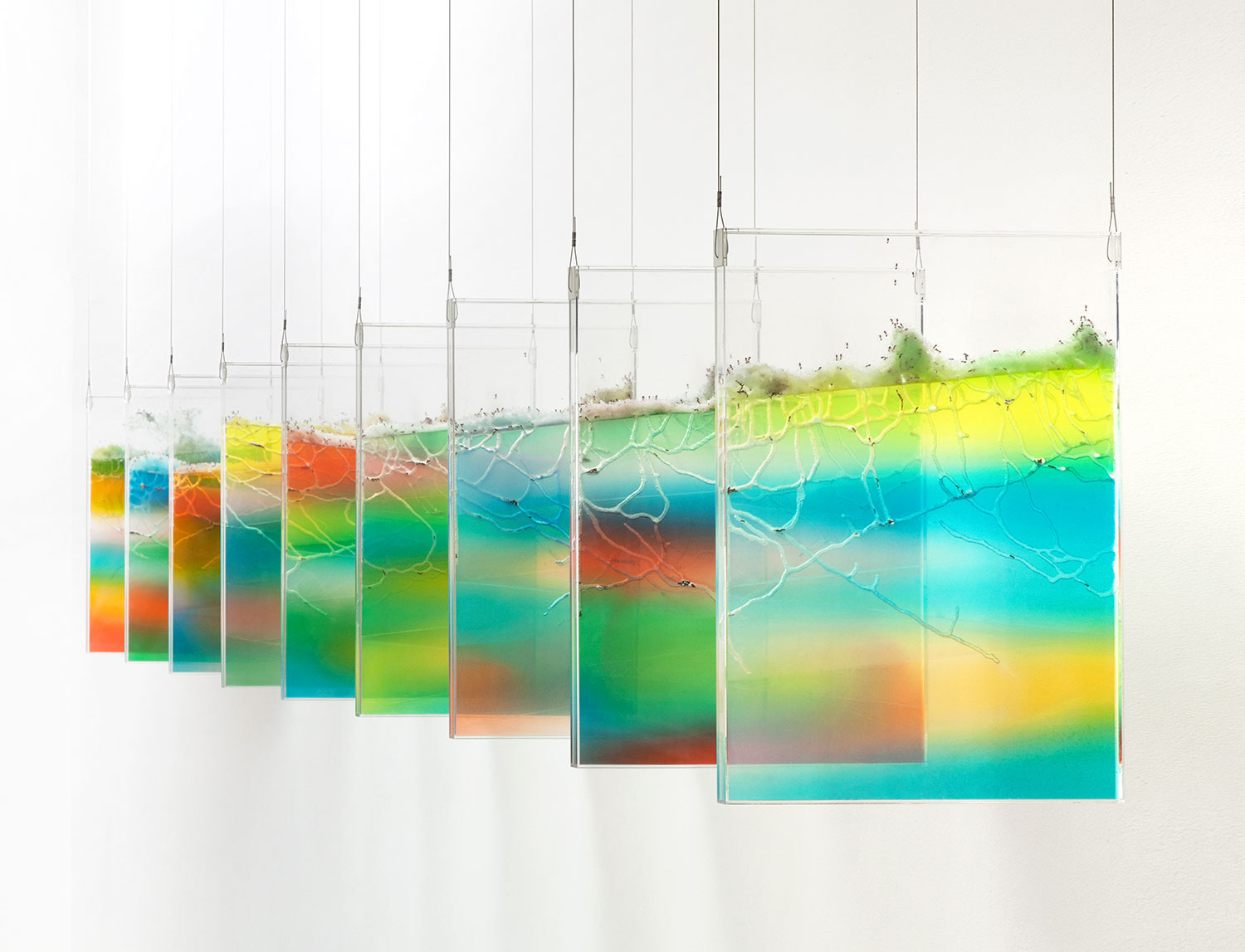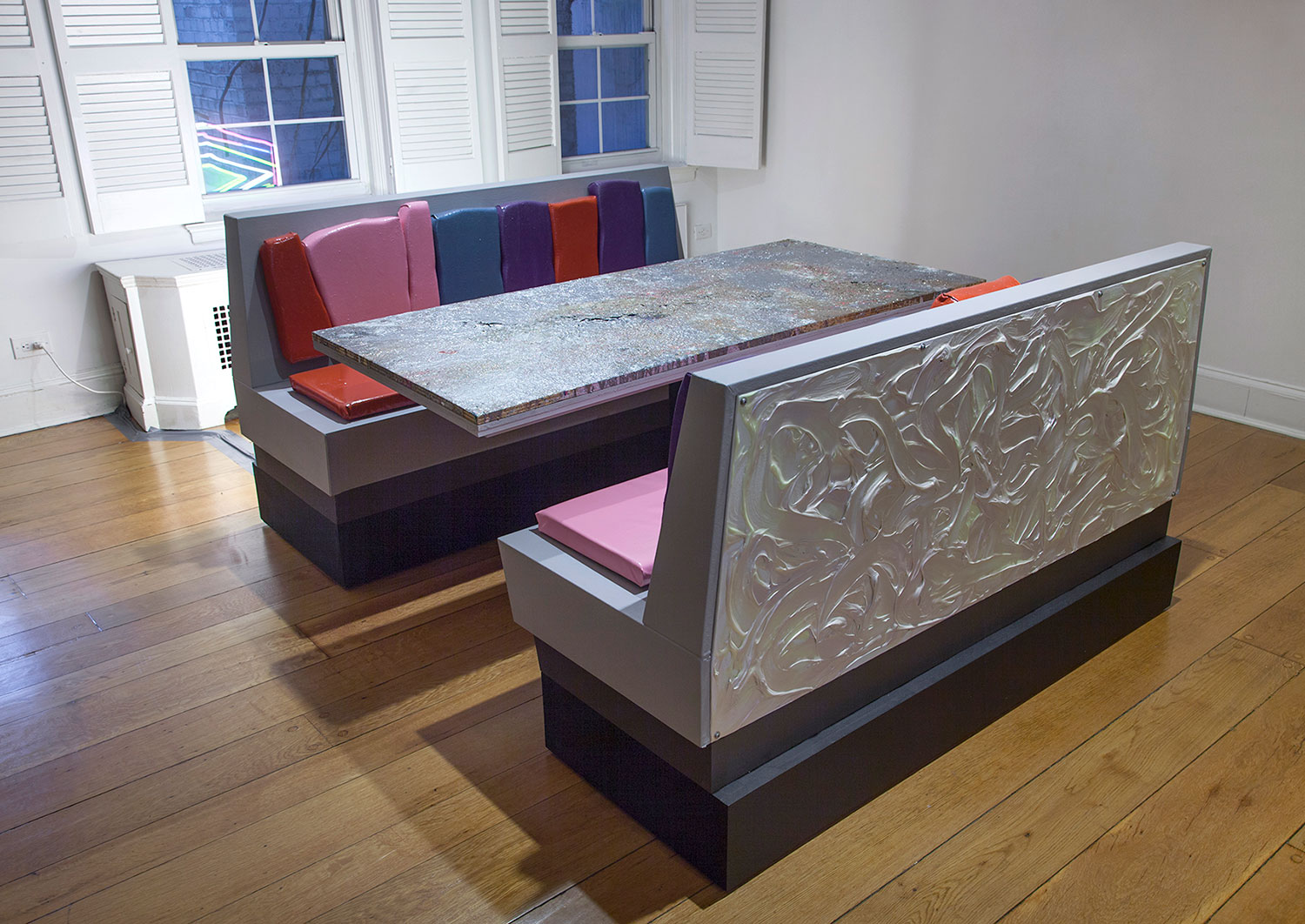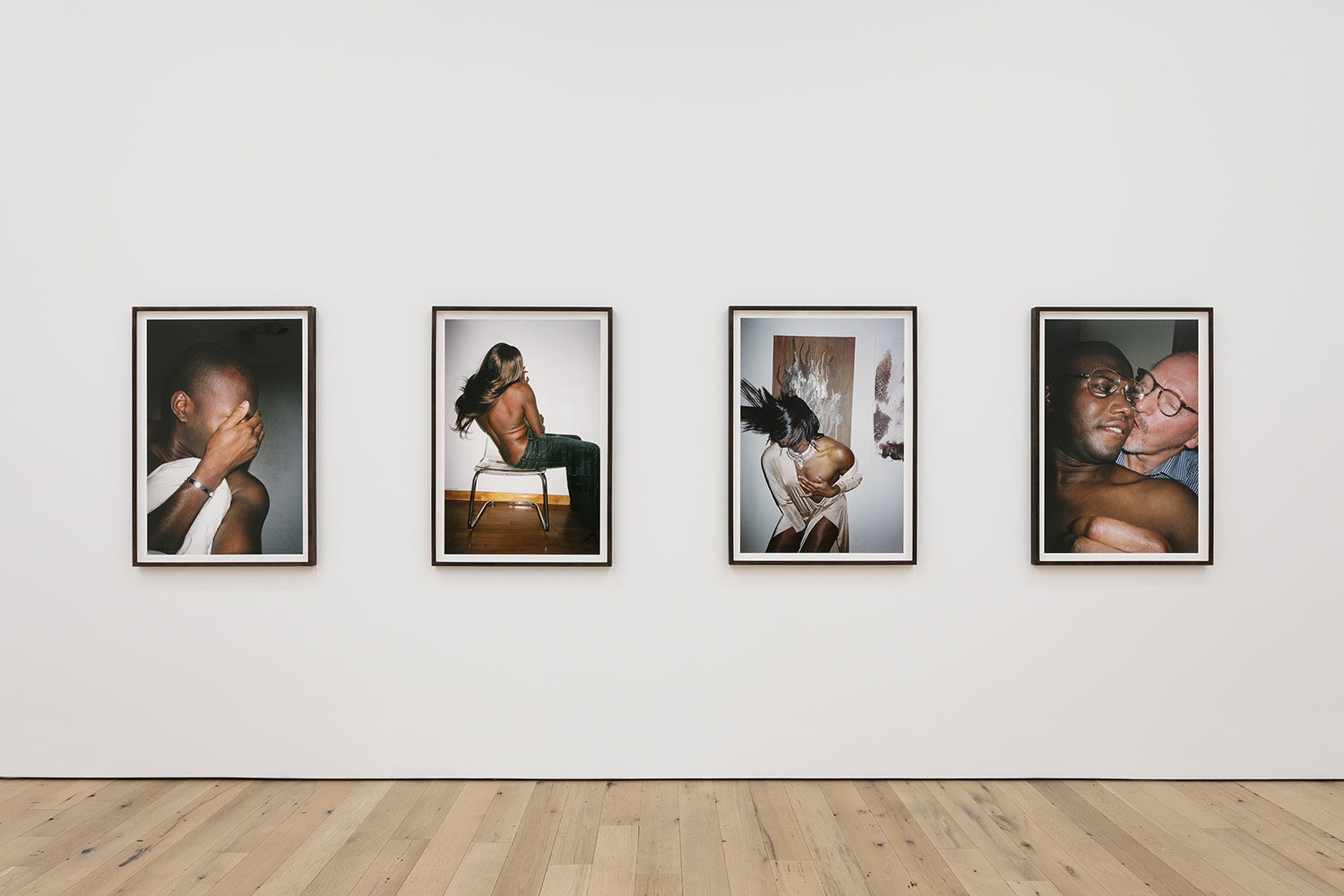A fine-grained texture permeates Oto Gillen’s photographs of New York City, as if the psychic friction of eight and a half million people generated visible particles. For his first solo exhibition at LOMEX’s new Tribeca location, Gillen printed eight images from his archive onto aluminum sheets that he folded into panels that hang without frames or glazing on the gallery walls. The works are all the same size (42 × 63 inches) and oriented vertically, evoking the proportions of a smartphone — although they were made with a professional camera. What distinguishes Gillen’s images is not their subjects but the care with which they are composed and presented. He photographs commonplace occurrences with spectacular sensitivity, transforming relatable scenes into glimpses of the monumental energy that animates this metropolis.
Gillen approaches his camera with a painterly sensibility, cranking up the gain on its sensor in order to generate digital noise so pervasive that it undermines the informational quality of these photographs. Prints that look sharp at a distance actually consist of a dense fog of colored dots. This technique is most prominent in July 4th, 2019 (all works 2021), in which a glowing cloud of red light almost consumes the dark silhouettes of the Brooklyn Bridge and FDR drive. The picture documents the boundless glow of a firework, but not the explosion itself. Flashes of magenta and violet trace the underside of the roadway, and the round lights on the bridge’s cables pierce through the vermillion sky like a strand of tiny pearls. Dozens of slight variations in hue occur within the ominously colored sky, and this soft-edged fluctuation caused my eye to dissociate from the subject matter and drift freely through the chromatic vapor. Gillen further stretches the bounds of conventional representation in Downpour, July 22nd, 2020. Taken during a summer rainstorm, this mesmerizing image renders the deluge as a cacophony of light. Individual droplets bounce off the dark asphalt in the bottom of the frame, but they lose their definition in the upper third and become a luminous haze reminiscent of J. M. W. Turner. The rhythmic activity in this picture feels more like technologically advanced impressionism than documentary photography.
Gillen’s understated abstraction leverages the poetic force of composition to counteract the empirical certainty of digital images. Each work possesses a mysterious aura despite the fact that it depicts familiar objects and phenomena. Madison Street, March 30, 2019 shows a cluster of slender skyscrapers basking in late-afternoon sun, but the pictorial drama takes place along the edges of the frame. Dark silhouettes of buildings and an overpass surround these distant buildings on all sides. Ornamental pieces of a roofline jut out like black teeth into the open sky, and a crisp line cuts off the top of the buildings at a slight angle. Sunlight glints off the roof of a bus at the bottom edge of the picture, providing the floor of what feels like a massive urban canyon. This unusual container gives the golden light a more tangible presence than the grid of windows and concrete in the center of the picture. Composing these images takes skill and patience, but the raw ingredients of Gillen’s vision are clearly legible—implicitly suggesting that these extraordinary moments belong to all of us. This work serves as a reminder that, even in the era of perpetual distraction, visual curiosity transforms and renews our relationship to our surroundings.

